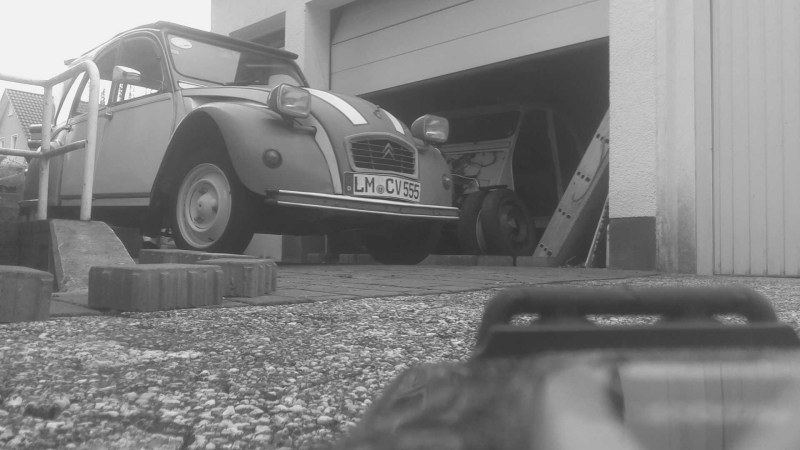While Mars is currently under close scrutiny by NASA and other space agencies, there is still a lot of exploring to do here on Earth. But if you would like to explore a corner of our own planet in the same way NASA that explores Mars, it’s possible to send your own rover to a place and have it send back pictures and data for you, rather than go there yourself. This is what [Norbert Heinz]’s Earth Explorer robots do, and anyone can drive any of the robots to explore whatever locations they happen to be in.
A major goal of the Earth Explorer robot is to be easy to ship. This is a smaller version of the same problem the Mars rovers have: how to get the most into a robot while having as little mass as possible. The weight is kept to under 500g, and the length, width, and height to no more than 90cm combined. This is easy to do with some toy cars modified to carry a Raspberry Pi, a camera, and some radios and sensors. After that, the robots only need an interesting place to go and an Internet connection to communicate with Mission Control.
[Norbert] is currently looking for volunteers to host some of these robots, so if you’re interested head on over to the project page and get started. If you’d just like to drive the robots, though, you can also get your rover fix there as well. It’s an interesting project that will both get people interested in exploring Earth and in robotics all at the same time. And, if you’d like to take the rover concept beyond simple exploration, there are other machines that can take care of the same planet they explore.
















Thanks Bryan for promoting my project!
I have released R6 in my backyard right now to give you a chance for a test ride. It’s transmitting in black and white images because I am still experimenting with reducing the bandwidth.
Follow my project on Hackaday or on Twitter (@RoboSpatium) to get noticed whenever the rover starts a test drive.
Have fun!
…and the link to the control center of my robots is:
http://www.RoboSpatium.de
with R6 control at:
http://www.homofaciens.de/robospatium-controlstation-R6_en.htm
hey you could use a medium solar panel and mount it on the roof, that way the batteries will get a recharge when the robot isnt used
It wouldn’t help extending the operating time that much. With the 2000mAh battery I am currently using, the rover runs at least for 2.5h. With 3 batteries I can drive endlessly (one in the rover, two at the charging station).
At least if that poor rover is stranded in desolate, remote terrain, there’s a 2CV there it can build a motorcycle out of to escape.
1++
No need to touch my smoothly running 2CV! There are heaps of spare parts in the garage you can use to build what ever vehicle you’d like ;-)
Smoothly running? What did you replace the original engine with then? :-D
1++
…your sense of hearing fades away after years of driving 2CV – it’s okay now ;))
An R1100RS with sparrow adapter plate?
Citroen used indeed BMW motors in a couple of prototypes but then decided to develop an own engine to get a more reliable drive. Today the R1100RS motor is very popular in 2CV racing cars. I guess you know about that?
Yes, I was aware of the BMW engine, but not the research when building the prototype. My corrugated 2CV can only dream of a “Dopsy” upgrade when finances allow.
http://www.entmontage.de is the story about my 2CVs, but no update for a long time…
I have been watching the video without the sound turned on as to not disturb others.
I have paused it to write this.
It seems that the first 5 minutes of an 8 minute video are showing a typical RC off road toy.
Don’t we already know that?
So, how many “rovers” have entered clothing stores and explored under the doors of the Ladies Changing Rooms?
rofl